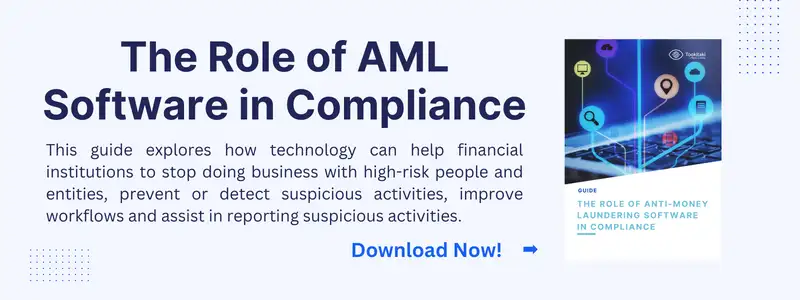In today's fast-paced world, financial institutions are constantly facing new challenges and risks. One of the biggest risks they face is financial crime, which can have serious consequences for both the institution and its customers. To combat this, transaction monitoring has become an essential tool for financial institutions. In this article, we will discuss the importance of transaction monitoring and how it helps in detecting and preventing financial crime.
What is Transaction Monitoring?
Transaction monitoring is the process of tracking and analysing financial transactions in real-time to identify any suspicious or fraudulent activity. It involves the use of advanced technology and algorithms to monitor and analyse large volumes of transactions and the purpose of transactions, looking for patterns and anomalies that may indicate potential criminal activity.
The purpose of a transaction refers to the reason behind a customer's financial activity or the intended use of the funds. This can encompass a wide range of purposes such as providing support to family members, funding education, covering medical expenses, financing tourism trips, settling debts, investing in financial assets, making direct investments, engaging in trading activities, and more.
Why Do Financial Institutions Conduct Transaction Monitoring?
Detecting Suspicious Activity
Transaction monitoring helps financial institutions to detect suspicious activity that may be indicative of money laundering, terrorist financing, or other financial crimes. By analysing transaction data, the system can identify unusual patterns or behaviours that may warrant further investigation. This can include large or frequent transactions, transactions involving high-risk countries, or transactions that are inconsistent with a customer's profile.
Compliance with Regulations
Financial institutions are subject to strict regulations and laws, such as the Bank Secrecy Act in the US and the AMLA in the Philippines, which require them to have effective anti-money laundering (AML) and counter-terrorist financing (CTF) programs in place. Transaction monitoring is a crucial component of these programs, as it helps institutions to identify and report suspicious activity to the relevant authorities. Failure to comply with these regulations can result in hefty fines and damage to the institution's reputation.
Protecting Customers
Transaction monitoring not only helps financial institutions to protect themselves from financial crime, but it also helps to protect their customers. By detecting and preventing fraudulent activity, institutions can prevent their customers from falling victim to scams and other criminal activities. This not only helps to maintain customer trust but also ensures that their funds and personal information are safe.
Transaction Screening
In addition to transaction monitoring, financial institutions also use transaction screening to further enhance their AML and CTF efforts. Transaction screening involves comparing customer information against various watchlists, such as government sanctions lists and politically exposed persons lists, to identify any potential risks. This helps institutions to ensure that they are not doing business with individuals or entities that are involved in illegal activities.
The Role of Technology
The increasing volume and complexity of financial transactions have made it nearly impossible for institutions to manually monitor and analyse all transactions. This is where technology comes in. Advanced transaction monitoring and screening systems use artificial intelligence and machine learning to analyse large volumes of data in real-time, making it easier for institutions to identify and prevent financial crime.
Transaction monitoring is a crucial tool for financial institutions in the fight against financial crime. By detecting and preventing suspicious activity, institutions can protect themselves, their customers, and comply with regulations. With the help of advanced technology, transaction monitoring has become more efficient and effective, making it an essential component of any financial institution's risk management strategy.
How Does Tookitaki Help?
To further enhance your financial institution's risk management strategy and combat financial crime, consider testing Tookitaki's Transaction Monitoring solution. This innovative tool allows you to comply with regulatory requirements on continuous monitoring by connecting to the AFC ecosystem. With the Tookitaki software, you can generate fewer and higher quality alerts, prevent fraud loss, and respond to emerging threats quicker. The easy configuration and glassbox explainability of FRAML's powerful detection engine make it a valuable asset in your fight against financial crime.
The module offers capabilities in both prevention and detection, with real-time transactional fraud prevention and transactional monitoring. By incorporating FRAML into your operations, you can achieve faster go-live times and stay ahead of potential risks in the ever-evolving financial landscape. Embrace the power of technology and take your risk management efforts to the next level with Tookitaki's Transaction Monitoring solution.
Anti-Financial Crime Compliance with Tookitaki?





